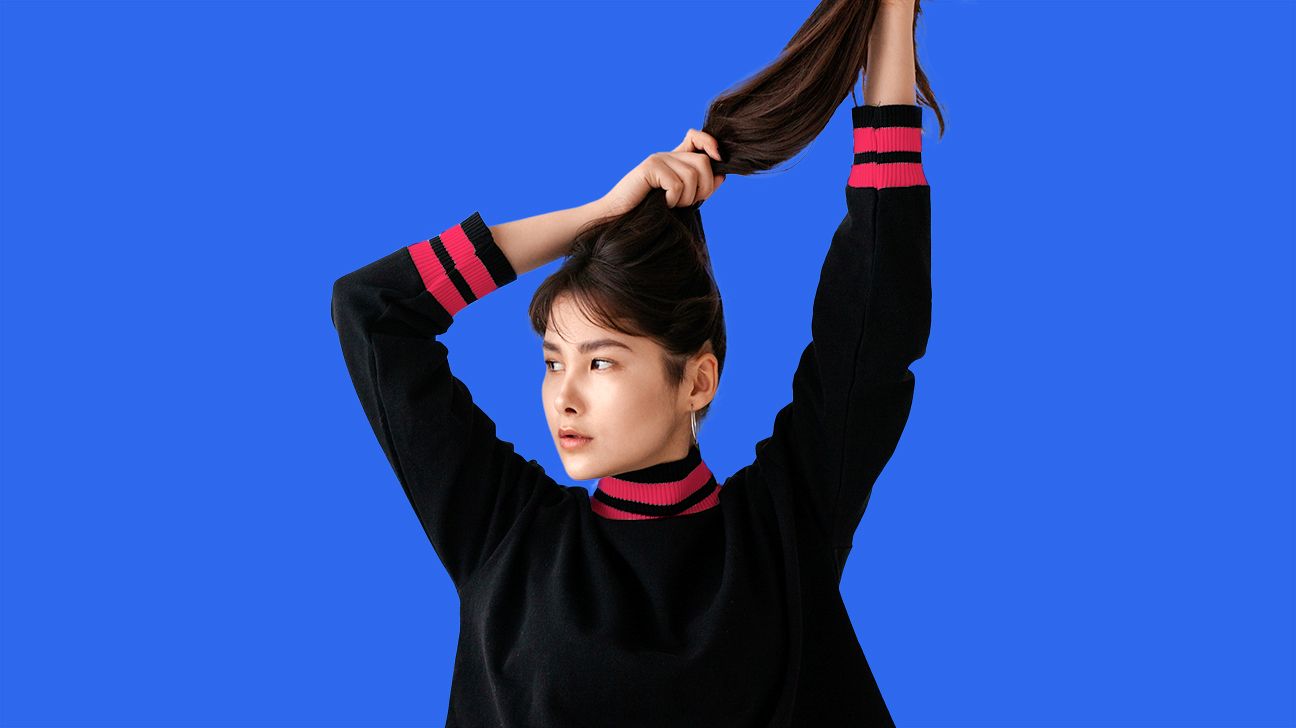We include products we think are useful for our readers. If you buy through links on this page, we may earn a small commission. Here’s our process.
Greatist only shows you brands and products that we stand behind.
Our team thoroughly researches and evaluates the recommendations we make on our site. To establish that the product manufacturers addressed safety and efficacy standards, we:- Evaluate ingredients and composition: Do they have the potential to cause harm?
- Fact-check all health claims: Do they align with the current body of scientific evidence?
- Assess the brand: Does it operate with integrity and adhere to industry best practices?
Every other conditioner, hair mask, and leave-in treatment under the sun has “keratin” on the label. While the word sounds healthy (carrots anyone?) is it actually going to give you a lush, glittering, straight-haired mane right off the head of a Pantene model?
What is it?
Keratin is a protein found in the hair and nails (and feathers, horns, wool, hooves, and claws… ) of vertebrates. It’s basically the building block of hair, and some peeps think supplementing with it in the form of pills, serums, and shampoos will lead to stronger, healthier hair.
Before you load up your digital cart with keratin-enriched goodies, here are the deets.
Keratin treatments are supposed to make hair:
- smoother
- straighter
- less frizzy
- easier to manage
How well these products and treatments work depend on a few factors:
- how healthy your hair is to begin with
- the hair’s natural texture and thickness
And the award goes to…
The other chemicals found in keratin treatments — like ammonium thioglycolate, sodium hydroxide, and methylene glycol — tend to be real MVPs of healthier hair. Keratin is just easier to pronounce and natural, so peeps like to focus on it.
Nonetheless, the ingredients are a package deal so you’ll probably see results.
DIY or go pro? Here are the deets.
Salon treatments
Often dubbed a “Brazilian keratin treatment,” you’ll need to set aside a decent chunk of time (and cash) to pencil this one in: we’re talkin’ anywhere from 2 to 4 hours over 2 separate days. The typical price range is $300 to $800.
First, the stylist will apply a cream that contains formaldehyde. Yeah, that formaldehyde — more on the potential risks in second.
Then, your locks will be blown dry and straightened. You won’t be able to wet your hair for several days, until you visit the salon again.
At your next appointment, your stylist will rinse out all the chemicals and lather on another treatment to lock your hair in place. Your smoother, straighter strands should last up to 3 weeks.
Choosing a salon
A solid pro should be able to outline exactly what to expect and the health risks involved. Since salon treatments typically emit formaldehyde, you deserve to know exactly what product you’re getting.
You’ll also want to make sure the salon is well ventilated.
Sadly, there have been instances of falsely labeled “formaldehyde-free” products — so ask your stylist for the name of the treatment and scour the ingredients just in case.
There are alternative options that use glyoxylic acid to straighten hair, but the results only last up to 2 months.
Pro tip:
You can prolong your results by steering clear of hair products with sulfates and keeping chlorine and sodium chloride (salt) at bay.
The scoop on shampoos, serums, and conditioners
Keratin shampoos, serums, and conditioners don’t contain the same harsh chemicals as salon-grade treatments, but they also aren’t as effective.
When shopping for products, look for the ingredient keratin hydro lysates, which detangles and helps repair damaged hair. A 2013 study found that this active component in keratin helped strengthen subjects’ locks.
Keratin supplements are everywhere and aren’t without risk. Too much of this stuff can lead to dangerous levels of protein in your system.
Consult your doctor before jumping on the supplement train and inquire about the safest sources.
Salon keratin treatments don’t technically contain formaldehyde, since it’s a gas. They do have formalin, methylene glycol, methanediol, and methanol though, which release formaldehyde when heated or mixed with water — both things that happen in the styling chair.
Stylists have reported respiratory problems, nosebleeds, and other health issues from inhaling these fumes over time, so it’s not something to take lightly.
A 2014 study found that these treatments emit fumes at a level five times higher than the recommended level — including brands labeled formaldehyde-free.
Salon treatments also don’t need FDA approval, which means your safety is really in your own hands. Because of the risks involved, pregnant women, those with formaldehyde sensitivity, and those with respiratory problems should avoid it.
A few side effects formaldehyde sensitivity can cause include:
- watery eyes
- burning sensation in the eyes, nose, and throat
- coughing
- wheezing
- nausea
- skin irritation
If you’re worried about the potential health repercussions in the name of smoother hair, talk to your stylist about alternative treatments.
- Keratin treatments straighten, smooth, and strengthen hair.
- Professional salon treatments emit formaldehyde, which carries the risk for side effects.
- There are now formaldehyde-free salon treatments (with glyoxylic acid) that are safer for pregnant women and anyone looking for a toxin-free alternative.
- Over-the-counter products are cheaper but have less dramatic results.


